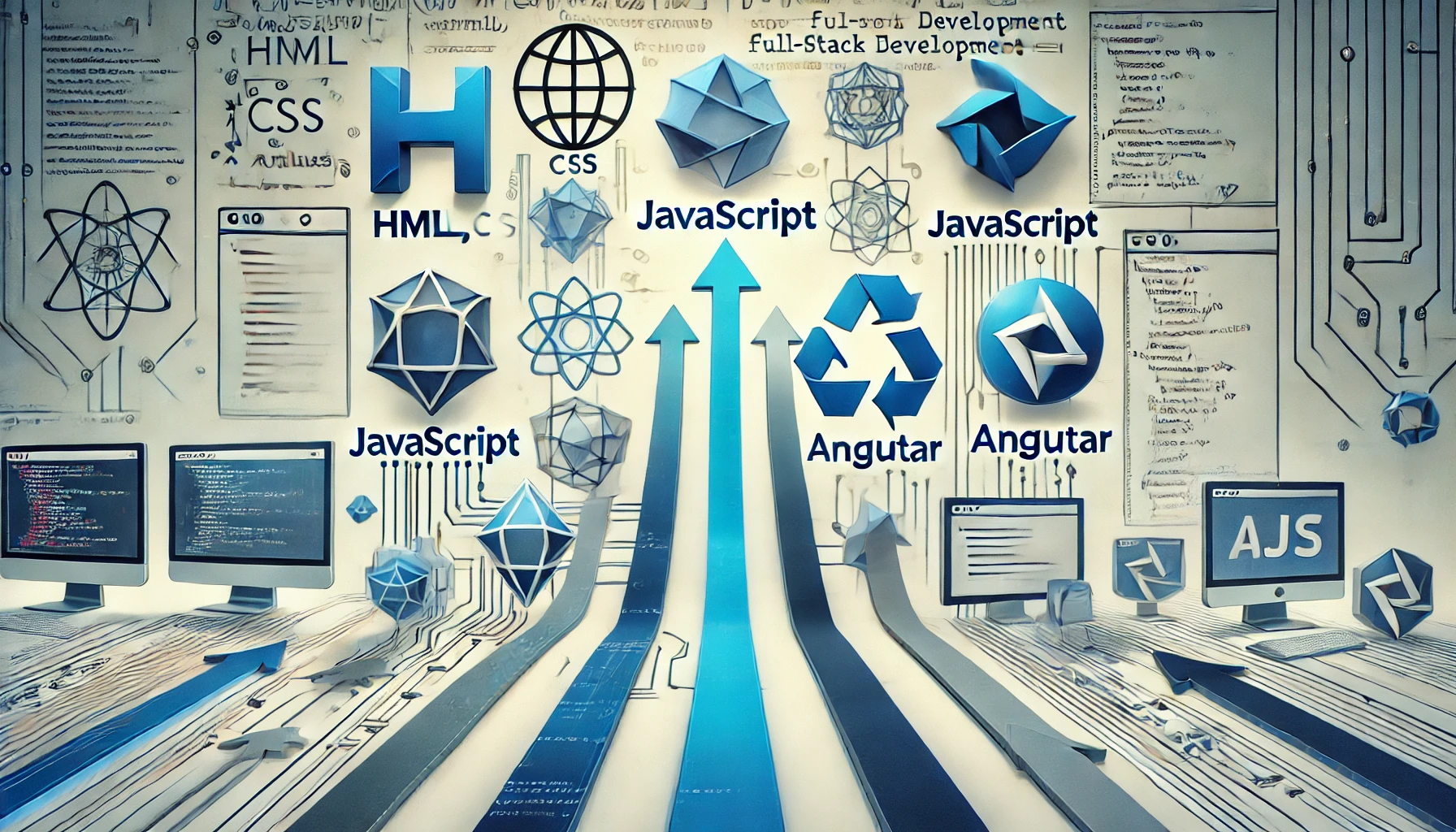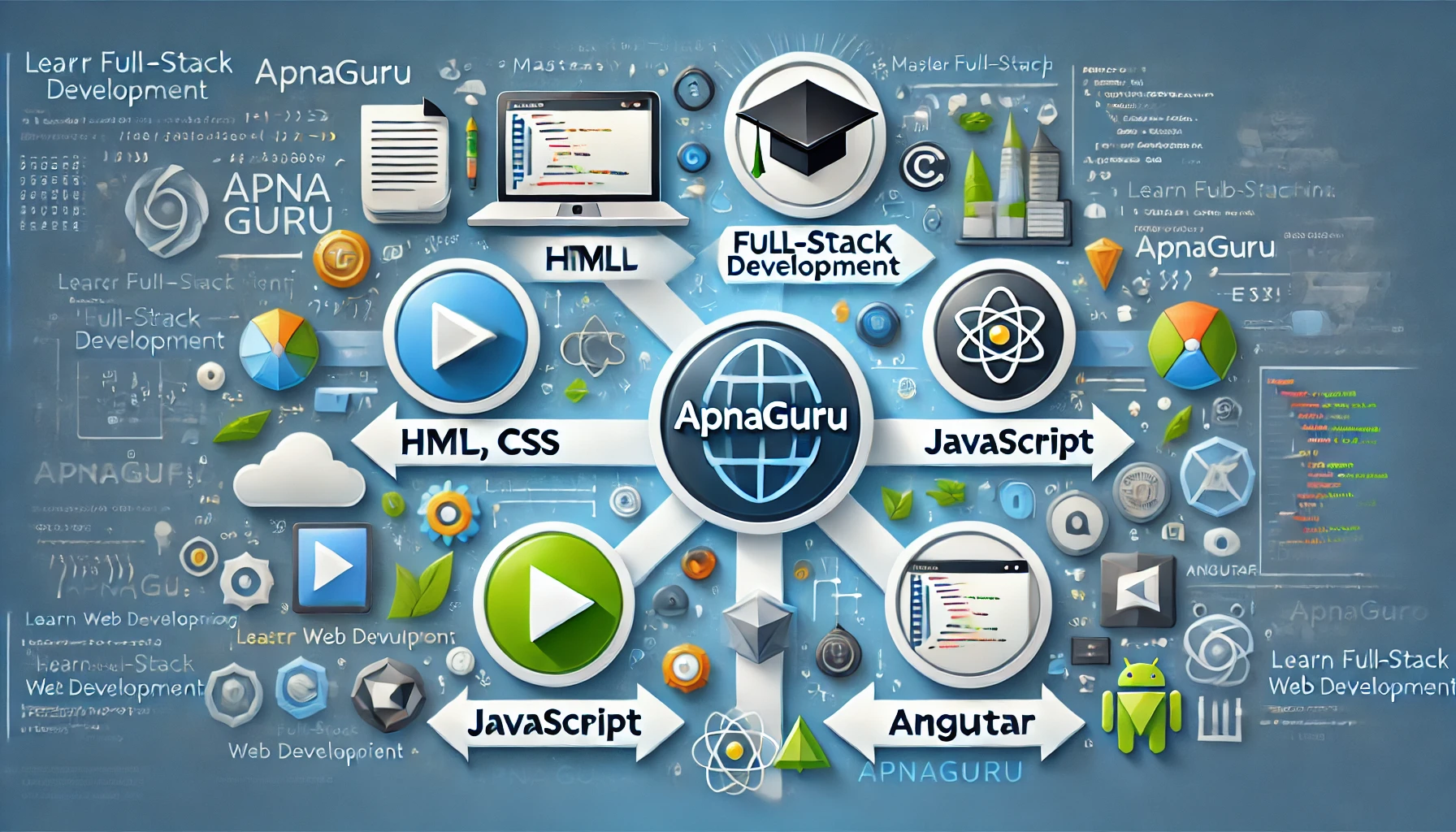Mastering the Web Development Toolkit: HTML, CSS, JavaScript, and Angular
The Power of HTML, CSS, JavaScript, and Angular – A Pathway to Full-Stack Development
Introduction
In the fast-paced world of web development, HTML, CSS, JavaScript, and Angular are not just buzzwords; they are the cornerstones of modern web development. These technologies are the backbone of front-end and, in some cases, full-stack development. This powerful combination empowers developers to build dynamic, interactive, and highly functional web applications. Let's explore the individual roles of each technology and how they intertwine to create exceptional user experiences.
How It Works
These four technologies work in harmony, with each playing a crucial role in the development process:
HTML (HyperText Markup Language)
Imagine HTML as the blueprint of a webpage. It defines the structure and content of a web page, providing the basic building blocks like headings, paragraphs, lists, forms, and tables. HTML uses tags to represent these elements, creating a hierarchical organization that makes the content understandable for both humans and machines.
CSS (Cascading Style Sheets)
While HTML provides the structure, CSS adds the style and visual appeal. It determines how the webpage looks - the colors, fonts, spacing, layout, and animations. CSS is like dressing up the webpage, ensuring it's visually appealing and engaging. With CSS, you can create responsive designs that adapt seamlessly across different devices, making the user experience consistent.
JavaScript
JavaScript brings the webpage to life with interactivity. It handles user interactions, enables dynamic content updates, and allows for real-time processing. Think of JavaScript as the brain of a webpage, responding to user actions and making the content interactive. From simple things like hover effects to complex features like animations, JavaScript enhances user engagement.
Angular
Developed by Google, Angular is a powerful framework that extends HTML with components and services, allowing for the development of single-page applications (SPAs). Angular simplifies the development process, making it easier to build complex web applications that are scalable, maintainable, and performant. Think of Angular as a structured approach to building web applications, providing a robust framework for managing code and data.
Features of Each Technology
Each technology boasts unique features that make it invaluable in web development:

HTML
- Simple to learn
- Cross-platform support
- Semantic elements for better accessibility and understanding
- SEO-friendly
CSS
- Flexibility in design
- Animations and transitions for engaging user experiences
- Media queries for responsive layouts
- Cross-browser compatibility
JavaScript
- Asynchronous processing for faster and smoother interactions
- Event handling for responding to user actions
- DOM manipulation for modifying content and structure dynamically
- API integration for connecting to external data sources
Angular
- Modular structure for organized and maintainable code
- Two-way data binding for seamless updates between UI and data
- Dependency injection for better code organization and testing
- Extensive libraries for common web development tasks
- TypeScript support for better code quality and scalability
Uses
Let's look at how these technologies are used in real-world applications:
HTML and CSS
Together, HTML and CSS are used to create the structure and styling of websites and applications. They form the foundation for all web pages, from simple blogs to complex e-commerce platforms.
JavaScript
JavaScript is essential for interactive elements like forms, modals, sliders, real-time validation, and dynamic content updates. It allows users to engage with the webpage in a dynamic way, making the experience more engaging and interactive.
Angular
Angular is used for building large-scale, structured applications that require complex user interactions and data management. It's ideal for single-page applications (SPAs), enterprise-level applications, e-commerce websites, data dashboards, and complex user interfaces.
Applications
Understanding the capabilities of these technologies, we can see their real-world applications:
HTML/CSS/JavaScript
This combination is perfect for basic websites, blogs, portfolios, and landing pages. They allow you to create visually appealing and functional webpages without the need for complex frameworks.
Angular
Angular is suitable for more complex projects like SPAs, enterprise-level applications, e-commerce sites, data dashboards, and complex user interfaces. Its structure and features allow for scalability and maintainability, essential for large, data-driven applications.
Advantages
Using HTML, CSS, JavaScript, and Angular offers many advantages for developers:
Cross-Platform Development
Websites and applications built with these technologies can run seamlessly across different platforms and devices, ensuring accessibility to a wider audience. Whether it's a desktop computer, a tablet, or a smartphone, the website will display correctly, providing a consistent user experience.
Scalability
Angular's modular design allows for the development of scalable and maintainable code. As the application grows, new features can be added easily, ensuring the code remains organized and manageable.
Efficiency
With JavaScript, applications can operate asynchronously, allowing for smooth interactions and preventing the webpage from freezing. This is crucial for complex applications with multiple features, ensuring a responsive and user-friendly experience.
Cost-Effective
These technologies are open-source, meaning there are no licensing fees. Additionally, there is a large and active community of developers who contribute to their development and offer support, making it a cost-effective choice for web development.
Conclusion
The combination of HTML, CSS, JavaScript, and Angular represents the cornerstone of front-end and full-stack development. They offer a robust and efficient way to build interactive and engaging web applications. Whether you're a student, career-changer, or tech enthusiast, these technologies are essential for anyone looking to build a successful career in web development.
Why These Technologies Are Advanced Compared to Others
These technologies are continuously updated and improved, making them highly integrated and reliable for modern web development. They are also supported by large and active communities, ensuring access to resources, support, and knowledge sharing. Angular, for example, provides built-in tools for routing, HTTP services, and unit testing, features that many other frameworks lack.
Benefits for Students: Career and Future Prospects
Learning these technologies opens doors to numerous career opportunities in the ever-evolving tech industry. Proficiency in HTML, CSS, JavaScript, and Angular is highly sought after, leading to roles like front-end developer, full-stack developer, and UI/UX designer. These skills are foundational for further learning in areas like backend frameworks, database management, and mobile app development.
Mastering these technologies makes students versatile professionals equipped to handle the full cycle of web application development, from front end to backend systems. This versatility is highly valued in the tech industry, giving students a competitive edge.
Start Your Full Stack Journey with ApnaGuru
ApnaGuru's Full Stack Development with AI Course is designed to equip students with the knowledge and skills needed to become successful full-stack developers. The course covers HTML, CSS, JavaScript, and Angular in depth, providing students with a comprehensive understanding of these technologies. Through hands-on coding, real-world projects, and industry-relevant knowledge, ApnaGuru helps students build a solid foundation for a future-ready career in tech.

In Summary
The combination of HTML, CSS, JavaScript, and Angular forms the foundation of modern web development, empowering developers to create dynamic, interactive, and highly functional websites and applications. Whether you are new to coding or seeking to expand your skills, learning these technologies opens up a world of opportunities in the exciting and ever-evolving tech industry.
Ready to take your career to the next level? Explore ApnaGuru's Full Stack Development with AI Course and embark on your journey to becoming a skilled and sought-after full-stack developer.